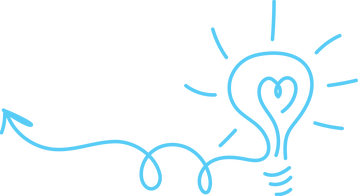Nine Principles for Building an Effective Human Capital Plan

Almost every business leader will say that people are their most important asset, but for quickly growing organizations it can be a struggle to manage all the complex aspects of HR for existing staff; and rapidly adding new headcount only adds to that complexity.
If you are going to take this principle seriously then human capital planning is crucial. But exactly what is a human capital plan, what should it include and how do you get started? A human capital plan (HCP) is a valuable tool that organizations use to drive focused actions that can ensure goal achievement and business success. It allows organizations to assess, plan for and respond proactively to its human capital challenges and needs.
It helps shape the organization by building a plan to develop the workforce and practices needed to meet an organization’s vision, mission and goals. Human capital challenges such as having capable leaders, building workforce skills, driving high performance and ensuring retention of top talent can be addressed through effective human capital planning. Your HCP will establish a framework of policies, practices and actions that guide your efforts in meeting these workforce needs. Human capital management is relevant to businesses of all shapes, sizes and complexities.
Human capital management is relevant to businesses of all shapes, sizes and complexities. Human resource management may not initially be part of a small business’s focus, as companies can start off as solely managed and operated by one individual. As an organization grows and develops, its human capital needs and strategies will need to evolve alongside any business strategy changes.
A HUMAN CAPITAL PLAN ENCOMPASSES SEVERAL KEY COMPONENTS TO EFFECTIVELY MANAGE AN ORGANIZATION’S WORKFORCE. THE OFFICE OF PERSONNEL MANAGEMENT’S DESCRIBES THESE AS KEY ELEMENTS.
KEY ELEMENTS
Strategic direction:
Understanding the organization’s strategic plans, budget constraints, workforce demographics, and stakeholder needs. It sets the vision for the desired state of human capital.
Human capital goals:
The broad objectives around which the plan is built. Goals can be related to talent acquisition, performance management, and leadership development.
Strategies and policies:
How the goals will be achieved. They cover areas like workforce planning, talent acquisition, employee development, and engagement.
Implementation plan:
A detailed roadmap for executing the strategies and achieving the goals.
Acountability system:
Mechanisms to monitor progress and ensure responsible parties are held accountable.

Nine principles to follow to build an effective human capital plan for your organization:
It’s important to recognize how significantly human capital issues can affect your business. Without acceptance of its importance in your organization’s framework, all plans regarding your workforce will fall flat or at least be deprioritized. Realizing how your human capital decisions affect your bottom line is an important step before drafting the plan.
Transparency around human capital issues. such as culture, inclusion, and leadership behavior, affects an organization’s brand and financial value. In an article, Deloitte estimated that in 2019 year, billions of dollars’ worth of valuation have been lost due to leadership and culture-related challenges.
Human capital matters should not be viewed as tied to a cost center, but as investments with some return expected. Create the value chain from the business goal to the individual actions you will take to reach that goal.
A few questions to ask:
What are the human capital issues that are in the way?
What is the capability I need to build to achieve the business goal?
Creating that value chain from the business goal to actions taken means you think about and add value every step of the way. This simple process is flexible enough to encompass more sophisticated business goals and human capital issues.
From a human capital point of view, you can do one of two things:
Help increase revenue per employee
Take into account all the things that you offer which are unique to your organization. Offering differentiated products enables you to dominate a market. And those products or services cannot be offered without the tremendous talents of your workers. It’s also important to focus on developing your people to deliver more, for example through learning and development efforts.
Optimize or minimize the cost per employee
Look for investments in areas and technologies that might drive efficiencies and make work easier, such as workforce planning, performance management etc. You have to be careful about the second option though. With minimizing, you do not want to bring the cost per employee so low that you then face retention issues. Focus instead on optimizing.
LEADERSHIP SKILLS TRAINING BRINGS GOOD RESULTS
One of TriNet’s clients had project managers onsite working in teams to serve customers. Because the project managers were not as effective as necessary about managing their people, TriNet collaborated with them to develop leadership skills via online learning and facilitated development activities with the project management team. The result was an improvement in their leadership and a correlating improvement in customer service. The leaders were more productive and completed more work due to better planning and resource management.

Do not adopt best practices just because others are using them. Best practices only work if they are focused on employing targeted human capital actions relevant to your business. Discovering and emulating other companies’ best practices has been very popular—especially in the last 10 years.
Unfortunately, the best practices of another company are often irrelevant to your own company. They generally add no value.
It is not until you focus on what you are doing specifically in your business and taking targeted human capital actions relevant only to your situation, that best practices become meaningful. You need to go through a human capital planning process where all practices are tied concretely to your business goals.
When you put actions in place, make sure all those actions work together and are integrated with one another—otherwise you will have a system that works against itself.
Examples of contradiction include:
If you are trying to promote more collaboration within your team but your incentive program is based only on individual actions, you may not achieve your desired goals. • If you do quarterly incentive payments, yet you only do a performance review on a semi-annual basis, the system may not work.
HEALTHCARE INSTITUTION IMPROVES CUSTOMER EXPERIENCE
One of TriNet’s healthcare clients was experiencing significant turnover, much of it involuntary. Because the company did not have an effective performance system, they were paying a lot of severance just to minimize their risk as employees were terminated.
What they were trying to improve was the patient’s experience. Having patients see different caregivers every time did not help, so reducing turnover could clearly impact the business. Their immediate short-term goal was to understand:
• Turnover rate
• Turnover costs
• Severance costs
Once all these factors were analyzed, they put a plan into action and were able to see reduced turnover and reduced severance costs, along with improved scores from their patients based on their patient experience.

The objective of the human capital plan is to maximize the value of a company’s investment in people. This means you should think ahead about what you are trying to achieve and what your desired results might look like.
Recommended steps include:
- Determine the result you want to achieve
- Develop your hypothesis on what activity will get you to your goal
- Determine how you will assess your performance and what your benchmarks are for success
- Execute the activity • Measure results for success
- Refine and repeat as needed In each of these cases, companies began the project by planning for their expected result—and then determined how to assess whether their actions were successful or not.
6. Human capital plans are a team effort
Building an effective HCP is crucial for your business to optimize your workforce and achieve business success. For most businesses today, one of the largest expenses is the people costs–but it is also a major opportunity.
It’s important to understand human capital planning is not solely HR’s responsibility. You need to involve business leaders, managers and even employees in shaping the plan. Business leaders need to be involved and participate both in planning and implementation. They have to be willing participants and champions or the HCP could be difficult to fully operationalize.
When involving business leaders in a human capital plan, HR can help them understand both the business issues involved as well as what needs to be done from a human capital point of view—but then you also have to put measures in place, so they are held accountable. Involving managers and employees fosters collaboration, enhances decision-making, and leads to a more effective and sustainable HCP.
When the HCP is planning cycle is complete, communicating to business leaders, managers and employees is just as important in ensuring it is a success. Adding an element of your employee rewards program for leaders to manage the human capital plan can be an effective tool to demonstrate commitment to the HCP and drive success as well.


As the human capital plan moves forward, there will be ongoing adjustments needed. Allow for those adjustments to take place. For example, you may have determined that you need to hire five salespeople to drive new business in an expanded territory. You have determined how this will be done and what the market rate is for their skill sets. But as you go you may need to adjust—maybe you need more than five people after all or you have to modify the compensation.
Ongoing adjustments are necessary but it is also important to do a formal review of the whole human capital plan periodically. A suitable time frame is every quarter—long enough to get something substantive done, but not so long that you are far removed from what happened.
You will need to prioritize your actions based on value and ease of implementation.
Ask these two questions:
- How valuable would this be for the business?
- How difficult or easy is it to implement?
Logically, you concentrate your initial efforts on those actions that have high value and are easiest to do. The actions that have high value but are more difficult to do will require the most planning and the largest investment— though usually these are the ones that give you the most pay-off. Prioritizing and limiting to a few initiatives is critical.
Remember also that it is always about the customer! You need to think about what you are trying to achieve for the customer. As you come from the outside in, examine the processes and capabilities you will need to have to create the ultimate customer experience.
Some questions you need to ask:
- What experience do I need to create for the customer?
- What products or services do I need to have to satisfy the customer?
Think about revenue per employee and cost per employee in the context of what you are trying to achieve for your customer. That should lead to the financial results that you want. It also leads to a differentiation.
The Bottom Line: A Good Plan Is Unique
It is much more difficult to copy workforce capability than it is to copy a marketing program or a product. And the reality is, you don’t really want to copy anyone else’s human capital plan.
Rather, you want to build the human capital plan that is right for your unique situation, business model and goals. Build your human capital and build the capability of your people. The result is a powerful competitive advantage that cannot be easily replicated in the marketplace.


